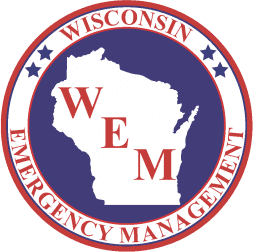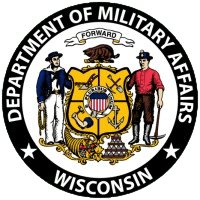 Transportation of the COVID-19 vaccine requires strict temperature controls and special packaging. Wisconsin Department of Military Affairs photo
Transportation of the COVID-19 vaccine requires strict temperature controls and special packaging. Wisconsin Department of Military Affairs photo
While all disasters are local, sometimes an incident goes beyond a jurisdiction’s capability to respond. During a complex or prolonged response, such as the ongoing COVID–19 pandemic, the emergency management community has long recognized the need for a qualified team of experienced, well-trained individuals with specialized skills that can assist a local incident commander, which is known as an Incident Management Team (IMT).
Members of an IMT may work in public safety, local government or the private sector. This allows these teams to draw on a diverse background of experiences to help tackle difficult problems.
“We provide support to a local agency, community, or county during a critical response situation,” said Bill Tyler, manager of emergency and crisis management at Exact Sciences, who’s held positions including incident commander and logistics chief as part of a responding IMT. “The support can be achieved at a number of different levels, meaning personnel have different skillsets based on training and experience, which will enhance and assist during a response or recovery situation.”
Wisconsin has local and regional IMTs that specialize in helping communities when they are overwhelmed by an emergency. They have capabilities that include experience in responding to fires, floods, tornadoes, riots, hazardous material spills, and other natural or human-caused incidents. An IMT provides trained personnel to support local communities during times of need, crisis, or extended operations.
Wisconsin Emergency Management (WEM) and the Department of Natural Resources (DNR also maintain state IMTs that can be called upon when needed. During the state’s fight against the COVID–19 pandemic, the state IMT played a key role in several critical areas of the response, including the distribution of personal protective equipment (PPE) across the state.
In November, the Department of Health Services (DHS) asked WEM to help lead the State Vaccination Task Force and create a distribution system for getting vaccines to clinics, pharmacies, and other vaccine providers. Due to the scope of the effort, it was clear the situation required a specialized team to perform several critical duties.
“The state utilized a COVID IMT to manage this once in a generation event,” said Chris Hohol, COVID IMT planning chief. “The team was organized to be flexible and respond dynamically as changes were needed.”
 An IMT member helps package vials of COVID-19 vaccine for distribution at one of the hubs established in Wisconsin. Wisconsin Department of Military Affairs photo
An IMT member helps package vials of COVID-19 vaccine for distribution at one of the hubs established in Wisconsin. Wisconsin Department of Military Affairs photo
To accomplish the task, the team designed a hub-and-spoke model.
“The hub-and-spoke distribution model was needed because of the complex storage and handling requirements of the Pfizer vaccine,” said WEM Acting Administrator Greg Engle, who served as the Vaccination Task Force operations lead during the response. “It required storage at ultra-cold temperatures around –70 ℃. Once thawed, the vaccine had to be used in five days.”
Only a few dozen locations around the state had ultra-cold freezer storage, so the state established five regional distribution hubs in partnership with local hospitals to store the vaccine and re-package it in smaller quantities to deliver to smaller providers, which served as the spokes.
The state also needed a way to get the vaccine from the hubs to the vaccinators. Until a contractor could be established, the state utilized the Wisconsin State Patrol.
“The Wisconsin State Patrol played a significant role in supply distribution, for both personal protective equipment and vaccine, during the early stages of the pandemic,” State Patrol Superintendent Anthony Burrell said. “The women and men of the Wisconsin State Patrol assisted public health officials and emergency management in getting supplies where they were needed until other distribution channels could be established. We have a long tradition of service in our state and our communities. We were proud to serve such an important role in Wisconsin’s pandemic response.”
The State Patrol lieutenant in charge of the transport of the vaccine was also a member of the state IMT.
 The Wisconsin State Patrol helps deliver COVID-19 vaccine doses to a health clinic in early 2021. Wisconsin State Patrol photo
The Wisconsin State Patrol helps deliver COVID-19 vaccine doses to a health clinic in early 2021. Wisconsin State Patrol photo
Stockpile management teams, made up of Wisconsin National Guard and Department of Natural Resources IMT personnel, were deployed to the hubs to manage the inventory and re-package the vaccine for shipment. Regional managers were assigned to each hub to schedule deliveries and work with providers to ensure they received vaccine they needed.
“The IMT had to hire and train the staff to support the effort and then exercise staff to manage operations and any emergencies,” said Ed Janke, public safety director for the village of Howard and the COVID–19 IMT operations chief. “We did this in a matter of days and then began distributing vaccine.”
The IMT helped ensure Wisconsin was ready when the vaccine started arriving on Dec. 14.
“It was one of the most impressive things I have ever seen,” Engle said. “The stress level was incredibly high, but the team has maintained the highest level of professionalism and executed the mission flawlessly.”
By early February, Wisconsin led the nation in the average number of COVID–19 vaccinations being administered daily. It also ranked in the top 10 for the number of first doses of the vaccines given to residents. Gov. Tony Evers also recently announced that more than six million doses of the currently available vaccines have now been administered in Wisconsin, with the groundwork laid by the IMT helping to reach that milestone.
“I never imagined that someday every adult in the United States might need access to a critical, life-saving vaccine all at once,” Hohol said. “The logistics to carry that out were daunting, but personally I am grateful for the opportunity to add another layer to our efforts to provide aid to the state and local partners. I look forward to continued success in seeing all that we can get done together.”

